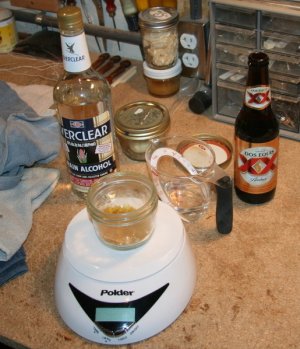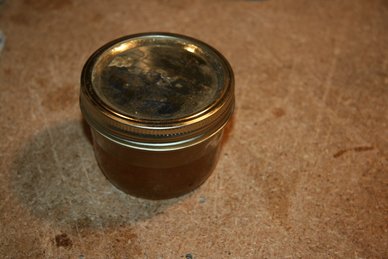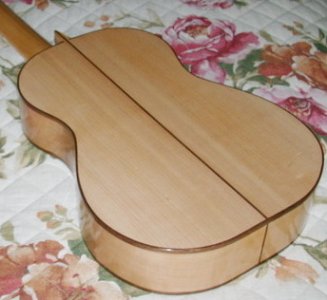You are using an out of date browser. It may not display this or other websites correctly.
You should upgrade or use an alternative browser.
You should upgrade or use an alternative browser.
Restoring a Guitar
- Thread starter Jackie23
- Start date
The only thing I wouldn't have done was use a water-based stain. Any coloring is put in the shellac so the color builds with the layers. After the wood is smoothed and best scraped instead of sanded, then the shellac goes directly on the wood in micro-thin coats. I usually put about 100 coats on a fine guitar. This method of finishing a guitar is called French polishing. It is non-toxic and involves shellac flakes that are dissolved in alcohol like EverClear and applied with a pad.
I make my pads from a ball of cotton balls put inside two layers of cotton fabric like a tee shirt or my favorite, a cotton schoolgirl bralette. The shellac is weighed and the alcohol is measured to determine the cut. I start with a heavier cut and finish with a light cut. Many expert French polishers use a bit of oil in their mix, but I prefer not to because I believe I get a tougher final finish especially when hand-rubbed after drying with a blend of nut oils and fine pumice. I go for the semi-gloss finish over the super shiny unrubbed finish.
The beer is to keep my nerves steady.



I make my pads from a ball of cotton balls put inside two layers of cotton fabric like a tee shirt or my favorite, a cotton schoolgirl bralette. The shellac is weighed and the alcohol is measured to determine the cut. I start with a heavier cut and finish with a light cut. Many expert French polishers use a bit of oil in their mix, but I prefer not to because I believe I get a tougher final finish especially when hand-rubbed after drying with a blend of nut oils and fine pumice. I go for the semi-gloss finish over the super shiny unrubbed finish.
The beer is to keep my nerves steady.



Here is the last guitar I made or will make. I used all hand tools and it kept my elbows in pain requiring steroid shots which caused cataracts that once removed revealed glaucoma which even with treatment is not reversible and leaves me partially blind. Intricate guitar building is much too stressful on my eyes. This guitar has about 120 micro coats of shellac. Note that ready-to-use shellac in the can is not good for finishing fine instruments. Too many additives.



